China Painting is an ancient art that is still popular today, thousands of years after he was born. It is a form of decoration for porcelain and ceramics other involves multiple layers of special lacquer is applied to a piece of porcelain or glazed ceramic above to form a visual design. After each layer is painted, the piece is fired in an oven at the "low" to make permanent enamels. (When it comes to firing clays and glazes in the kiln, a "low" fire is about 1200 degrees F to about 1600 degrees F.) The result of these multiple layers of paint and firing is a Standing on the richly decorated room. The technique of painting on porcelain is widely used on antennas previously glazing and wall and floor tiles.
China Painting is also known as porcelain art, and porcelain is also known as porcelain. Porcelain is the preferred surface on which to paint China. It was made as early as 1480 CE, during the Ming Dynasty in China. By the 1600s, the Italians had their own forms of porcelain, enamels and began to perfect. Russian porcelain was developed in 1700. At that time, the French began to make their own form of porcelain and developed decals or transfers, like those we use today, although hand painting was quite prevalent, too. Porcelain in Dresden in Germany appeared around 1730. England has developed a "real" china shortly after. In 1769, Americans were working in porcelain. The most beautiful Limoges porcelain is called while (pronounced OZH-Lim) and shown in France around 1773. The fine white clay from which it is done can not be found in the region of France.
Porcelain is a highly refined white clay is filtered to remove impurities. Before it is difficult to cook in a hot oven, it is very fragile and crumbles easily, but once it is cooked at high temperature, it becomes extremely hard, durable and almost transparent. The result is a delicate looking piece, but hardy items that can be used for multiple purposes, tile wall to the dishes. This type of clay is not suitable for running pot, molding, carving or as raw material is not sufficiently elastic, made of porcelain liquid can be poured into molds. Chinese painting can be done on any surface fire glazed earthenware which can be baked in an oven. These surfaces are made of stoneware, porcelain, ceramics and others.
China paints are made with the same attention to design, model, color and visual texture as other forms of painting (watercolor, oil, acrylic, etc.) are made. The techniques closer to those of the artist watercolor artist from China based on the white surface to provide white in the resulting array. But the appearance is like a painting in oil-rich and deep. Once cooked, the multiple layers will not bleed into each other that do watercolors throughout the painting process. The white paint in China is on a piece of porcelain or ceramic in an infinity of possible shapes and sizes, from small boxes to large pots, tiles to dishes.
The last layer on a piece of painted porcelain can be enhanced with gold or silver hard real shot at the play, or one of the many chandeliers and add pieces of opalescent spectacular. The latter, extremely low fire glazes will not be as durable as varnish underneath. white porcelain paints are available for the surfaces to be painted other colors, but for a clean white the artist generally preferred to use the white part of his current base. Use a clean brush, cloth or an eraser, it can remove paint from areas covered it accidentally, he wishes to leave blank.
Contemporary China painting is done with a paint base made of fine crystals of minerals in the soil. They are known as overglaze. They are called overglaze because they must be applied and baked on top of other glazes that are used on the coin, if these glazes require a higher temperature range. If China enamels are fired at too high a temperature the color will fade or change and ruin. Often the tiles that were manufactured at the factory are used as glass painting surface.
The powder paint used in painting on porcelain is sold in bottles or envelopes gram in powder form. The paint can also be purchased in small apartments with oil premixed. The paint powder is mixed with oil to create the medium of painting. Many artists mix their own China oils of lavender oil or eucalyptus. Each artist has a tendency to prefer a particular type of mixture that can dry quickly and more or less the characteristics of the oil mixture to determine how fast the paint dries. Some companies sell special oils mixed especially for painting on porcelain. One of China Artists little just mix their enamel powder with water. Oil is generally preferred because it adheres to a surface gloss glazed better. Water can be used as a basis for painting if the artist will work on a matte surface.
Use a ceramic plate or white glazed tiles as a pallet, a small amount of powder is mixed with the oil using a knife or a stick until soft and creamy texture is achieved. Turpentine is used for cleaning brushes, pallets and clean up the mess. wearing protective clothing, because when mixed with oil paints may stain. It is important that the artist not breathe the powder as fine as it mixes because some colors contain lead and other toxic heavy metals.
Using a model prepared beforehand, the artist begins to apply paint only, using oil of turpentine or clarify his painting. She takes part in a furnace at 1200 degrees after each layer of paint thinner. The painting develops depth and richness with layers of paint and firing. She takes care not to let his palette of colors work together so that the result can be derived from the color on the palette. The current result is an unwanted "disturbing" color.
A painting of China can be completed and fired in a single layer, but for the depth and richness usually associated with the technique, multiple firings are generally preferred. In the first layer, the artist poses the basic model, leaving clean areas where whites are seen in the final portrait. At each subsequent layer of paint and shot the artist deepens shadows and brightens the colors until the final cooking when they come together in a satisfactory product. It is common to five to eight layers and firings on an individual piece, although more or less is sometimes.
Today, China painting is done primarily in electric ovens and gas. A small cone of clay is put in the oven with the pieces to cook. This cone of clay is a type of clay that will bend when it reaches a certain temperature, leaving the artist knows it is time to extinguish the fire.
If the artist waits too long the play could be ruined by excessive heat. Some electric ovens have a so-called "four-sitter", or a small device in which the cone bit of clay is placed. When the heat reaches a certain temperature, the cone turns and causes a small lever at the decline. This disables the oven. This makes it much easier for the artist to China not to ruin his work. For the porcelain painter hobby, there are stores that fires his pottery pieces for her, but it will have less control over how it is done.
Once the room is cooled, several layers can be painted on it, or it is ready for display or use. It takes as long as 24 hours for the oven hot enough to cool to see the finished product. The artist must use tongs with long handles and heat resistant gloves when opening an oven that has not yet cooled to protect his skin. If the part is taken then it is too hot, get it out in the air radiator can crack and ruin it, so patience must be exercised so as to let them stay in the oven until cool gradually it is cold enough. When the oven has cooled enough that the inside is returned to its normal color is red hot during the extreme temperatures of baking, the artist can usually carefully lift the lid and take a look for see if his pieces came out as expected, but if the room is much cooler than in the oven, it will be very careful because even a breeze of fresh air could be devastating.
Once the song ended, it can be considered a permanent piece of art, saving accident or disaster, will be around much longer than the artist who created it.
If you are enjoying reading this blog,Share it on Facebook, Twitter, Buzz or Reddit.
China Painting is also known as porcelain art, and porcelain is also known as porcelain. Porcelain is the preferred surface on which to paint China. It was made as early as 1480 CE, during the Ming Dynasty in China. By the 1600s, the Italians had their own forms of porcelain, enamels and began to perfect. Russian porcelain was developed in 1700. At that time, the French began to make their own form of porcelain and developed decals or transfers, like those we use today, although hand painting was quite prevalent, too. Porcelain in Dresden in Germany appeared around 1730. England has developed a "real" china shortly after. In 1769, Americans were working in porcelain. The most beautiful Limoges porcelain is called while (pronounced OZH-Lim) and shown in France around 1773. The fine white clay from which it is done can not be found in the region of France.
Porcelain is a highly refined white clay is filtered to remove impurities. Before it is difficult to cook in a hot oven, it is very fragile and crumbles easily, but once it is cooked at high temperature, it becomes extremely hard, durable and almost transparent. The result is a delicate looking piece, but hardy items that can be used for multiple purposes, tile wall to the dishes. This type of clay is not suitable for running pot, molding, carving or as raw material is not sufficiently elastic, made of porcelain liquid can be poured into molds. Chinese painting can be done on any surface fire glazed earthenware which can be baked in an oven. These surfaces are made of stoneware, porcelain, ceramics and others.
China paints are made with the same attention to design, model, color and visual texture as other forms of painting (watercolor, oil, acrylic, etc.) are made. The techniques closer to those of the artist watercolor artist from China based on the white surface to provide white in the resulting array. But the appearance is like a painting in oil-rich and deep. Once cooked, the multiple layers will not bleed into each other that do watercolors throughout the painting process. The white paint in China is on a piece of porcelain or ceramic in an infinity of possible shapes and sizes, from small boxes to large pots, tiles to dishes.
The last layer on a piece of painted porcelain can be enhanced with gold or silver hard real shot at the play, or one of the many chandeliers and add pieces of opalescent spectacular. The latter, extremely low fire glazes will not be as durable as varnish underneath. white porcelain paints are available for the surfaces to be painted other colors, but for a clean white the artist generally preferred to use the white part of his current base. Use a clean brush, cloth or an eraser, it can remove paint from areas covered it accidentally, he wishes to leave blank.
Contemporary China painting is done with a paint base made of fine crystals of minerals in the soil. They are known as overglaze. They are called overglaze because they must be applied and baked on top of other glazes that are used on the coin, if these glazes require a higher temperature range. If China enamels are fired at too high a temperature the color will fade or change and ruin. Often the tiles that were manufactured at the factory are used as glass painting surface.
The powder paint used in painting on porcelain is sold in bottles or envelopes gram in powder form. The paint can also be purchased in small apartments with oil premixed. The paint powder is mixed with oil to create the medium of painting. Many artists mix their own China oils of lavender oil or eucalyptus. Each artist has a tendency to prefer a particular type of mixture that can dry quickly and more or less the characteristics of the oil mixture to determine how fast the paint dries. Some companies sell special oils mixed especially for painting on porcelain. One of China Artists little just mix their enamel powder with water. Oil is generally preferred because it adheres to a surface gloss glazed better. Water can be used as a basis for painting if the artist will work on a matte surface.
Use a ceramic plate or white glazed tiles as a pallet, a small amount of powder is mixed with the oil using a knife or a stick until soft and creamy texture is achieved. Turpentine is used for cleaning brushes, pallets and clean up the mess. wearing protective clothing, because when mixed with oil paints may stain. It is important that the artist not breathe the powder as fine as it mixes because some colors contain lead and other toxic heavy metals.
Using a model prepared beforehand, the artist begins to apply paint only, using oil of turpentine or clarify his painting. She takes part in a furnace at 1200 degrees after each layer of paint thinner. The painting develops depth and richness with layers of paint and firing. She takes care not to let his palette of colors work together so that the result can be derived from the color on the palette. The current result is an unwanted "disturbing" color.
A painting of China can be completed and fired in a single layer, but for the depth and richness usually associated with the technique, multiple firings are generally preferred. In the first layer, the artist poses the basic model, leaving clean areas where whites are seen in the final portrait. At each subsequent layer of paint and shot the artist deepens shadows and brightens the colors until the final cooking when they come together in a satisfactory product. It is common to five to eight layers and firings on an individual piece, although more or less is sometimes.
Today, China painting is done primarily in electric ovens and gas. A small cone of clay is put in the oven with the pieces to cook. This cone of clay is a type of clay that will bend when it reaches a certain temperature, leaving the artist knows it is time to extinguish the fire.
If the artist waits too long the play could be ruined by excessive heat. Some electric ovens have a so-called "four-sitter", or a small device in which the cone bit of clay is placed. When the heat reaches a certain temperature, the cone turns and causes a small lever at the decline. This disables the oven. This makes it much easier for the artist to China not to ruin his work. For the porcelain painter hobby, there are stores that fires his pottery pieces for her, but it will have less control over how it is done.
Once the room is cooled, several layers can be painted on it, or it is ready for display or use. It takes as long as 24 hours for the oven hot enough to cool to see the finished product. The artist must use tongs with long handles and heat resistant gloves when opening an oven that has not yet cooled to protect his skin. If the part is taken then it is too hot, get it out in the air radiator can crack and ruin it, so patience must be exercised so as to let them stay in the oven until cool gradually it is cold enough. When the oven has cooled enough that the inside is returned to its normal color is red hot during the extreme temperatures of baking, the artist can usually carefully lift the lid and take a look for see if his pieces came out as expected, but if the room is much cooler than in the oven, it will be very careful because even a breeze of fresh air could be devastating.
Once the song ended, it can be considered a permanent piece of art, saving accident or disaster, will be around much longer than the artist who created it.




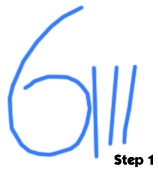
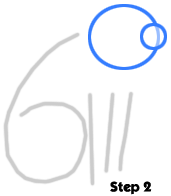
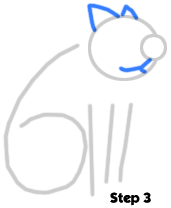
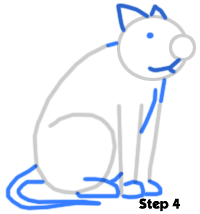
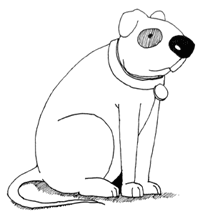
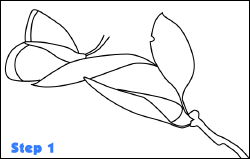 To start - get yourself a photograph to draw from. If you squint while looking at the picture some of the basic shapes should start to emerge. With the picture I used, I was able to see the following shapes of the butterfly, a branch and 3 separate leaves coming off of the branch.
To start - get yourself a photograph to draw from. If you squint while looking at the picture some of the basic shapes should start to emerge. With the picture I used, I was able to see the following shapes of the butterfly, a branch and 3 separate leaves coming off of the branch.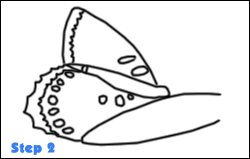 Step 2 - Adding in more details The way that I approach this butterfly drawing is no different than how I approach most of my art. I try and work from general details to specific details.
Step 2 - Adding in more details The way that I approach this butterfly drawing is no different than how I approach most of my art. I try and work from general details to specific details.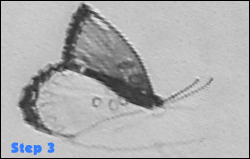 Step 3 - Shading The step three image is from the video and shows the contrast between a shaded butterfly wing, and one that only has detail lines added into it. I would suggest leaving the shading as your final step after you have added in your details.
Step 3 - Shading The step three image is from the video and shows the contrast between a shaded butterfly wing, and one that only has detail lines added into it. I would suggest leaving the shading as your final step after you have added in your details.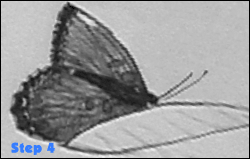 Step 4 - More Shading & Clean-upIn step four you can see the finished butterfly and an unfinished leaf. Keep going with the shading just as you were doing in step three.
Step 4 - More Shading & Clean-upIn step four you can see the finished butterfly and an unfinished leaf. Keep going with the shading just as you were doing in step three.










 Acrylic paints are one of the newest painting mediums, being introduced as 'recently' as 1955. They have come a long way since then, with an ever-widening range of paints and associated art materials.
Acrylic paints are one of the newest painting mediums, being introduced as 'recently' as 1955. They have come a long way since then, with an ever-widening range of paints and associated art materials. 